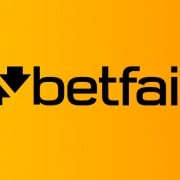Betfair Premium Charge Explained
Betfair opened in 2000 as the world’s first betting exchange. Betfair is a website that allows its clients to choose the odds they place bets at allowing them to have fairer odds. Betfair has won multiple awards including two Queen’s Award for Enterprises, one for innovation and one for international trade. As the company has expanded and improved new charges have come in to maintain standards. Here is everything you need to know about premium charges on Betfair.
1. What is the Premium Charge?
There are several situational charges that are used on Betfair to cover costs for providing their services. A newer charge that was introduced in September 2008 was the premium charge. Despite the charge only actually applying to an estimated 0.5% of Betfair clients, the charge was met with resistance.
Betfair makes sure the charge only effects a marginal portion of its clients and ensures the cost is only ever applied if the client has met certain criteria. By having these criteria in place they guarantee the charge will only be made if you are making substantial profits and will never incur if you haven’t earned.
The premium charge is calculated in such a way that the customer pays 20% of their gross profits in charges over a given period, but only if they meet certain criteria – see further below.
2. How Does Premium Charge Work?
Premium charges work by applying small fees on the top percentile of profitable clients. There are three main criteria clients must meet before being applicable for this charge. The first is the client’s account must be in the positive. If you aren’t making a profit you will not be charged. Secondly the client’s total charges since joining Betfair must be less than 20% of gross profits. However single bets that make up more than 50% of the client’s gross profits since joining Betfair will not be included. Lastly the client needs to have placed bets in more than 250 markets before incurring a premium charge.
Clients are notified before any money is taken when a premium charge has occurred. Every client is also given a £1,000 nest egg to use against premium charges. This means clients are exempt from the first £1,000 worth of fees incurred by premium charges. This allows for the more profitable clients that receive these charges to adjust to the system without suffering costly penalties.
So here are those three points in summary. To qualify for the premium charge:
- You must be in profit
- Your total charges since joining Betfair must be less than 20% of gross profits
- You need to have placed bets in over 250 markets
And you get an exemption from the premium charge on the first £1,000 of your profits
3. How much is the Premium Charge?
The premium charge is calculated in such a way that if the customer meets the criteria above, they will be made to pay 20% of their gross profits in charges in total, for both the latest week or your lifetime on Betfair.
So let’s say you have paid 15% of your gross profits as charges (i.e. commission) to Betfair over your lifetime.
Betfair will add an extra 5% in charges on your gross profits to take this up to 20%.
So if your gross profits were £1,000 (after you have had your £1,000 exemption) and you had only paid 15% in charges (£150), Betfair would then take a further £50 on top of the £150 you had paid to take it to 20%.
4. Why Were Premium Charges introduced?
Though Betfair didn’t always have premium charges they weren’t always the large international company that they are today. Betfair has opened international trading channels in parts of Europe and Australia. They increased their employed staff pool and costs spent on development and maintenance. They continue to grow and develop in order to bring clients the best cutting edge service possible. All of these things have extra costs though and unfortunately to remain open Betfair needs help to pay them.
Even though Betfair is a company that costs money to run they still endeavor to run a quality service at the cheapest prices possible for their clients. For example, even though Betfair uses a turnover charge based on client activity to help cover the costs paid to racing bodies, they don’t charge clients the full amount. Betfair absorbs the residual costs of placing the bets because they want to keep costs down for their clients. Betfair will remain a low costing, easy to use betting site through the help of their clients in covering some of the costs to deliver quality service.
Get FREE football tips from professional tipsters here







